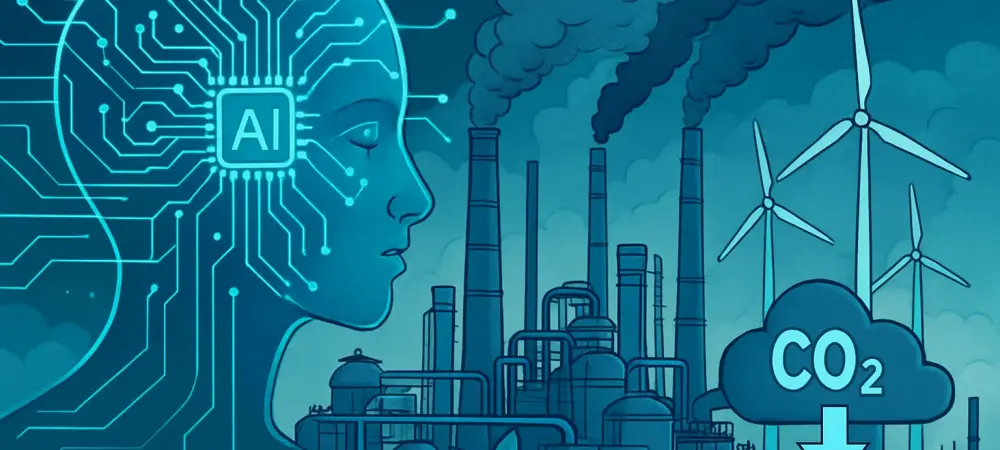Short Introduction
Welcome to an insightful conversation with Dominic Jainy, an IT professional with deep expertise in artificial intelligence, machine learning, and blockchain. With a passion for applying cutting-edge technologies to solve real-world challenges, Dominic has been closely following the role of AI in transforming heavy industries. Today, we dive into how AI can drive decarbonization in sectors like steel and cement, the energy challenges it poses, and the innovative solutions that could shape a sustainable future for industrial operations.
What makes decarbonizing heavy industries like steel and cement so critical in the fight against climate change?
Heavy industries are some of the biggest contributors to global greenhouse gas emissions, accounting for over 30% of the total in 2024. Sectors like steel and cement are particularly tough to decarbonize because their processes—like burning fuel in kilns or using coke in blast furnaces—release massive amounts of CO2. If we’re going to limit global warming to 1.5°C, as outlined by climate experts, these industries need to slash emissions dramatically over the next decade. Failing to do so could jeopardize global efforts, as their carbon footprint directly impacts the planet’s temperature trajectory.
Why is it so much harder to cut emissions in these industries compared to sectors like transportation or buildings?
The core challenge lies in the energy-intensive nature of industrial processes. For example, producing steel requires temperatures above 1,500°C, often powered by fossil fuels like coal. Similarly, cement production emits CO2 not just from fuel but also from the chemical process of turning limestone into clinker. Unlike transportation, where electric vehicles can replace gas-powered cars, or buildings, where energy-efficient designs and renewables can make a big dent, heavy industries often lack scalable, cost-effective alternatives. The infrastructure and economics just aren’t there yet for widespread change.
How can AI step in to help reduce emissions in these carbon-heavy sectors?
AI offers practical tools to optimize operations and cut energy waste. It can monitor and adjust processes in real time, like tweaking temperature or fuel feed rates in cement kilns to use less energy. In steel production, machine learning can predict equipment failures or fine-tune furnace settings to minimize waste. These adjustments might seem small, but they can improve energy efficiency by 5-10% and reduce emissions without needing massive overhauls. Beyond that, AI also accelerates research into cleaner materials or processes by simulating thousands of scenarios much faster than traditional methods.
Can you share a specific example of how AI is making a difference in something like cement production?
Absolutely. In cement plants, AI-driven control systems can analyze variables like flame shape, airflows, and fuel types on the fly. For instance, if a plant switches to a less consistent fuel like biomass, AI can adjust burner settings instantly to keep things running efficiently. This avoids the old practice of running kilns hotter than needed as a safety buffer, which wastes energy. By stabilizing the process, AI also helps producers mix in more low-carbon materials like slag, cutting down on the CO2-heavy clinker. The result is a 5-10% boost in energy efficiency and a noticeable drop in emissions.
What kind of real-world impact have we seen from AI in steel production?
A great case is how AI has been used in steel plants to optimize operations. For instance, some companies have applied bio-inspired algorithms to hot-dip galvanizing lines, saving around a million dollars annually in energy and throughput costs. Predictive maintenance platforms are another win—by monitoring equipment like hydraulic motors, AI can predict failures with incredible accuracy, preventing costly shutdowns and allowing furnaces to run at optimal temperatures. This cuts energy waste and extends equipment life, translating to measurable emission reductions as long as production levels don’t spike.
AI sounds promising, but doesn’t it come with a hefty energy cost of its own? How does that affect its sustainability?
That’s a valid concern. AI systems, especially data centers running complex models, consume a significant amount of electricity—about 1.5% of global usage in 2024, with projections to double by 2030. This growing demand can strain energy resources, especially if it’s not powered by clean sources. If AI runs on fossil fuel-heavy grids, it could offset some of the emission cuts it enables in industries. The key challenge is ensuring that AI’s energy footprint doesn’t undermine its climate benefits, which means prioritizing renewable power for these systems.
What can be done to ensure AI systems are powered sustainably and don’t add to the emissions problem?
The focus has to be on building AI infrastructure that runs on clean energy. Some regions are already leading the way—Nordic countries like Norway and Iceland power their data centers almost entirely with renewables like hydropower and geothermal energy. Other solutions include designing more efficient AI hardware to reduce power needs and integrating data centers with green grids. Policies that mandate or incentivize renewable energy for computing hubs are also critical. If we align AI growth with clean energy expansion, it can support decarbonization rather than compete with industries for limited low-carbon power.
Looking ahead, what is your forecast for AI’s role in industrial decarbonization over the next decade?
I’m cautiously optimistic. AI has the potential to be a game-changer by optimizing processes and speeding up innovation in cleaner technologies, but its impact depends on how we manage its energy demands. If we can scale AI deployment on renewable-powered grids and integrate it with breakthrough solutions like hydrogen-based steelmaking, it could drive significant emission cuts. However, without coordinated efforts between industry, policymakers, and tech developers, there’s a risk that AI’s growth could strain energy resources. The next decade will be crucial in striking that balance and turning AI into a true catalyst for a net-zero industrial future.

